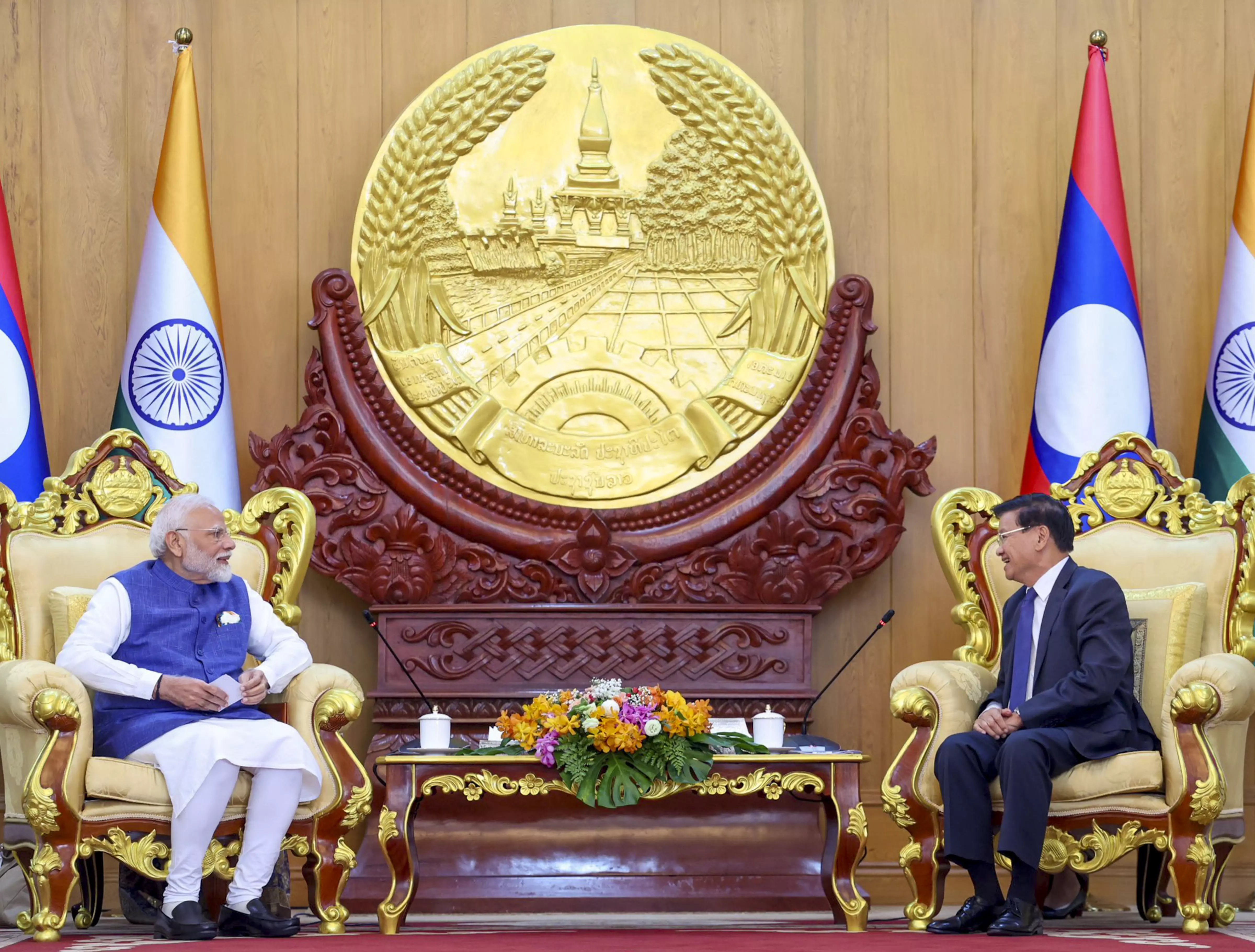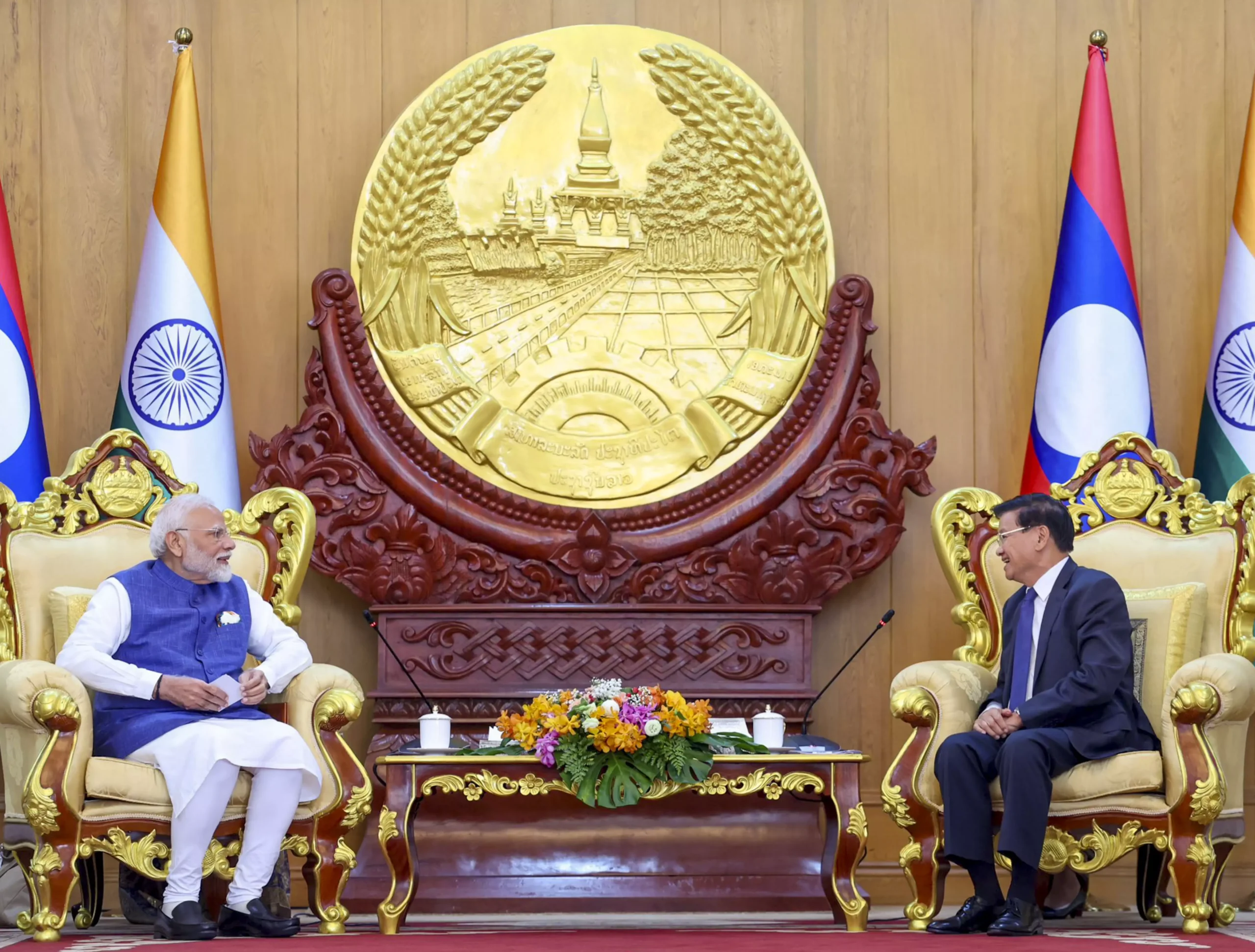
The East Asia Summit was hosted by Laos at Vientiane on October 11 with the participation of the 10 Asean members and eight major powers: the United States, China, Russia, India, Japan, South Korea, Australia and New Zealand.
The summit was attended, among others, by Prime Minister Narendra Modi, Chinese PM Li Qiang, President Yoon Suk Yeol of South Korea and Japan’s new PM Shigeru Ishiba. The EAS was preceded on October 10 by separate Asean summits with the leaders of the eight non-members, including with Mr Modi.
The series of internal and joint summits of Asean in Laos on October 9-11 are significant for vocal criticism of China’s aggressive actions in the South China Sea. China was not named by many but the accusatory fingers of several statements were clearly pointed towards it.
Of late, China has embarked on a series of acts of intimidation by its coast guard vessels using water cannons and lasers against Philippines’ coast guard and boats on supply mission to its sailors stationed on an abandoned ship in Philippines’ exclusive economic zone.
At the internal Asean summit, Philippines’ President Ferdinand Marcos Jr urged Asean “not to turn a blind eye to the aggressive, coercive and illegal actions of an external power against an Asean member state”. And that “its silence diminishes the organisation”.
At the Asean-China summit on October 10 attended by the Chinese PM, President Marcos Jr reportedly complained that his country was being “subjected to harassment and Intimidation” by China and called for “more urgency in the pace of negotiations” to draft the proposed code of conduct being negotiated between Asean and China for maritime management in the SCS.
China and Asean proposed to have such a code of conduct in 2002 but formal drafting could begin only in 2017. China has insisted that the code won’t be legally binding, and sought to place several restrictions on the autonomy of Asean members regarding the visits of foreign naval ships and on exploration of mineral resources and traditional fishing rights. President Marcos Jr has reportedly voiced his frustration that the parties could not agree on many things and “the definition of a concept as basic as ‘self-restraint’ does not enjoy consensus”.
At the Asean-US summit on October 10, US secretary of state Antony Blinken, who represented President Joe Biden, expressed America’s concern about “China’s increasingly dangerous and unlawful actions in the South and Ease China Seas, which have injured people and harmed vessels from Asean countries and contradict commitments to peaceful resolution of disputes”. He asserted that the US will continue to support freedom of navigation and freedom of overflights in the Indo-Pacific.
At the EAS, Prime Minister Modi stressed that in SCS “a strong and effective code of conduct should be created. And it should not curb the foreign policy of regional countries”. In an indirect comment on China, Mr Modi said that “our approach should focus on development and not on expansionism”.
According to the Japanese official website, at the summit Prime Minister Ishiba “strongly opposed continuing and intensifying activities that infringe upon Japan’s sovereignty and provocative military activities in the East China Sea”. He also conveyed Japan’s “serious concern about militarisation and coercive activities that are continuing and intensifying in the SCS”. Prime Minister Ishiba declared that “any unjust claims of maritime interests that do not align with the UN Convention on the Law of the Sea are unacceptable”.
In his statements, China’s PM avoided any mention of these simmering maritime conflicts and instead focused on deeper economic ties. At the EAS, Mr Li reportedly said that meddling by foreign forces was creating conflicts in the region.
In an Asean Plus 3 meeting with China, Japan and South Korea, Mr Li reportedly complained that “external forces frequently interfere and even try to introduce bloc confrontation and geopolitical conflicts in Asia”. Ironically, he called for more dialogue between countries for amicable resolution of disputes when China has stonewalled any progress on the negotiations to evolve a code of conduct for SCS and is relentlessly pursuing a course of maritime expansion and intimidation of fishing boats and coast guard vessels of several Asean members, including Vietnam, Philippines and Malaysia.
On October 2, Vietnam had “resolutely protested against the brutal treatment” of Vietnamese fishermen by the Chinese law enforcement agencies.
Coming to the support of China, veteran Russian foreign minister Sergei Lavrov on October 10 in Vientiane called US actions in Asia “destructive” and accused US of being behind the “militarisation” of Japan and attempting to turn countries against Russia and China.
Answering a question on the new Japanese Prime Minister’s ill-considered proposal for an “Asian Nato”, Mr Lavrov observed that “ideas about creating military blocs always carry the risk of confrontation that could escalate”. It may be noted that India has officially distanced itself from any such proposal.
At a press interaction, the Russian foreign minister said the US, Japan, South Korea, New Zealand and Australia wanted to make the Ease Asia Summit’s final statement “deeply political” and therefore “it could not be adopted”. Interestingly, he didn’t name any Asean member on this matter.
At the Asean-India summit, Mr Modi had pointed out the need for “Asean unity and centrality’. Unfortunately, Asean nations are divided even on such a critical matter as sovereignty and maritime territorial integrity of its members. Laos and Cambodia tend to take a pronounced pro-China stand perhaps because of their economic dependence on China. In Asean, all decisions are taken by consensus and there is no voting. This convention has paralysed Asean on taking any decisive stand on strategic issues. If Asean continues to be ineffective on major issue like the Myanmar situation and SCS disputes, its so-called centrality in East Asia will be increasingly questioned.
